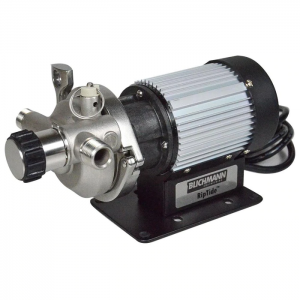- Joined
- May 13, 2019
- Messages
- 1,016
Hi all,
I've been avoiding machining stainless steel after reading about how some grades are very difficult to work with and will work harden especially when using a (MicroMark 7X16) mini-lathe and (PM25) mill. But, I have a very simple project I need to be in stainless steel and thought this would be the time to try it.
I need to make some washers with these dimensions:
OD: 0.420" (10.67 mm)
ID: 0.257" (6.53 mm)
Thick: 0.035" (0.89 mm)
The original part is 316, but I bought both 316 and 303 stock. My thoughts are I would try 316 first and switch to 303 if I get into trouble.
So, my plan is to turn down the outside to 0.420" from 1/2" stock. Then, drill the 0.257" hole using a No. F drill. I'm not sure about using a spotting drill first since that seems to work harden the material. Then, finally part off the end to the required thickness.
Any thoughts or words of encouragement?
I've been avoiding machining stainless steel after reading about how some grades are very difficult to work with and will work harden especially when using a (MicroMark 7X16) mini-lathe and (PM25) mill. But, I have a very simple project I need to be in stainless steel and thought this would be the time to try it.
I need to make some washers with these dimensions:
OD: 0.420" (10.67 mm)
ID: 0.257" (6.53 mm)
Thick: 0.035" (0.89 mm)
The original part is 316, but I bought both 316 and 303 stock. My thoughts are I would try 316 first and switch to 303 if I get into trouble.
So, my plan is to turn down the outside to 0.420" from 1/2" stock. Then, drill the 0.257" hole using a No. F drill. I'm not sure about using a spotting drill first since that seems to work harden the material. Then, finally part off the end to the required thickness.
Any thoughts or words of encouragement?




